- Cover Letters
- Jobs I've Applied To
- Saved Searches
- Subscriptions
- Marine Corps
- Coast Guard
- Space Force
- Military Podcasts
- Benefits Home
- Military Pay and Money
- Veteran Health Care
- VA eBenefits
- Veteran Job Search
- Military Skills Translator
- Upload Your Resume
- Veteran Employment Project
- Vet Friendly Employers
- Career Advice
- Military Life Home
- Military Trivia Game
- Veterans Day
- Spouse & Family
- Military History
- Discounts Home
- Featured Discounts
- Veterans Day Restaurant Discounts
- Electronics
- Join the Military Home
- Contact a Recruiter
- Military Fitness

AGM-86 Conventional Air Launched Cruise Missile
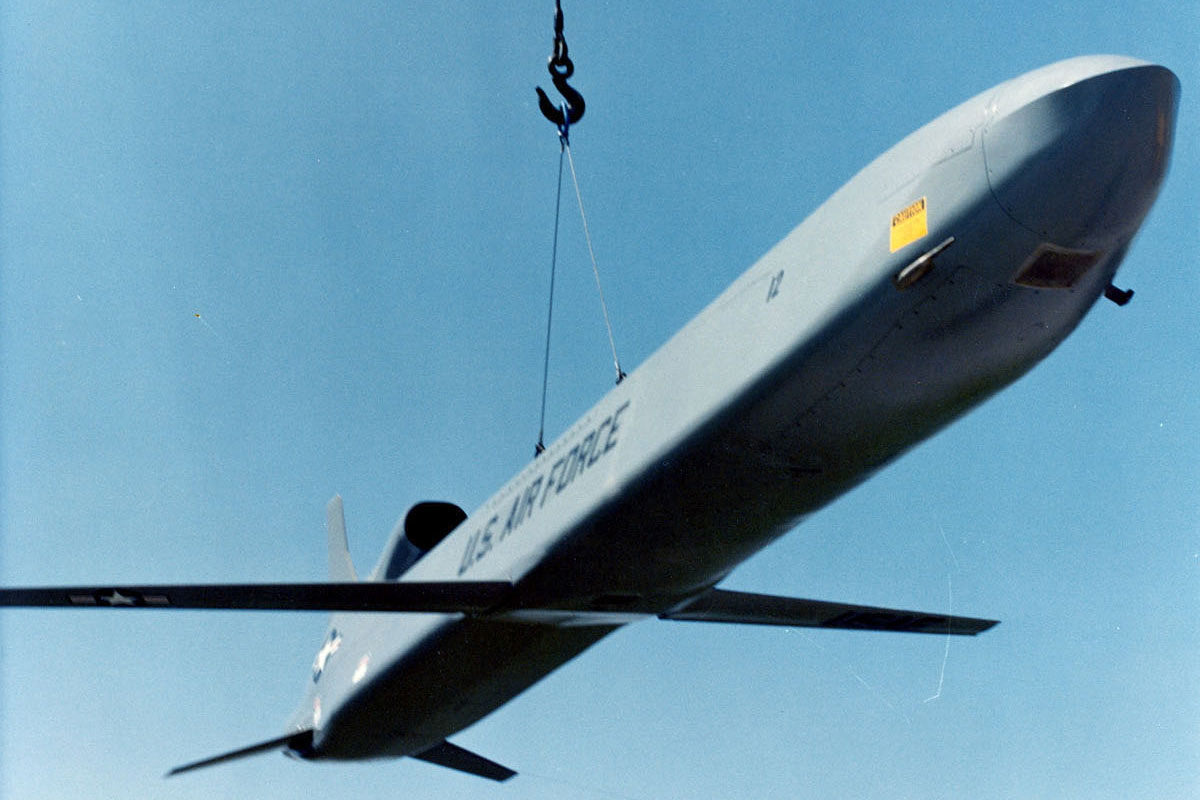
Contractor: Boeing Defense and Space Group
Guidance Contractors: Litton Guidance and Control, and Interstate Electronics Corp. (AGM-86C/D model)
Power Plant: Williams Research Corp. F-107-WR-10 turbofan engine
Thrust: 600 lbs
Length: 20 ft, 9 in
Weight: 3,150 lbs
Diameter: 24.5 in
Wingspan: 12 ft
Range: AGM-86B: 1,500+ miles; AGM-86C: 600 nm
Speed: AGM-86B, 550 mph; AGM 86C/D classified
Guidance System: AGM-86B, Litton inertial navigation element with terrain contour-matching updates; AGM 86C/D, Litton INS element integrated with multi-channel onboard GPS
Warheads: AGM-86B, nuclear capable; AGM-86C: Block 0, 2,000 pound class, and Block I , 3,000 pound class; AGM-86D, advance unitary penetrating warhead, 1,200 pound class
The AGM-86B air-launched cruise missiles and AGM-86C/D conventional air-launched cruise missiles were developed to increase the effectiveness of U.S. Air Force B-52H Stratofortress bombers. The CALCM has been used since the 1990s for long-range precision strike on the opening hours of conflict.
The small, winged AGM-86B/C/D missile is powered by a turbofan jet engine that propels it at sustained subsonic speeds. After launch, the missile's folded wings, tail surfaces and engine inlet deploy. The AGM-86B is then able to fly complicated routes to a target through use of a terrain contour-matching guidance system. The AGM-86C/D uses an onboard Global Positioning System coupled with its inertial navigation system to fly. This allows the missile to guide itself to the target with pinpoint accuracy.
AGM-86B/C/D missiles increase flexibility in target selection. AGM-86B missiles can be air-launched in large numbers by the bomber force. B-52H bombers carry six AGM-86B/C/D missiles on each of two externally mounted pylons and eight internally on a rotary launcher, giving the B-52H a maximum capacity of 20 missiles per aircraft.
The AGM-86C CALCM differs from the AGM-86B air launched cruise missile in that it carries a conventional blast/fragmentation payload rather than a nuclear payload and employs a GPS aided INS.
An enemy force would have to counterattack each of the missiles, making defense against them costly and complicated. The enemy's defenses are further hampered by the missiles' small size and low-altitude flight capability, which makes them difficult to detect on radar.
In February 1974, the Air Force entered into contract to develop and flight-test the prototype AGM-86A air-launched cruise missile, which was slightly smaller than the later B, C and D models. The 86A model did not go into production. Instead, in January 1977, the Air Force began full-scale development of the AGM-86B, which greatly enhanced the B-52's capabilities and helped America maintain a strategic deterrent.
Production of the initial 225 AGM-86B missiles began in fiscal year 1980 and production of a total 1,715 missiles was completed in October 1986. The air-launched cruise missile had become operational four years earlier, in December 1982, with the 416th Bombardment Wing, Griffiss Air Force Base, N.Y., which deactivated when the base closed in 1995. Besides its initial basing at Griffiss, the ALCM has also been based at: Grand Forks AFB, N.D., Wurtsmith AFB, Mich., Fairchild AFB, Wash., Eaker AFB, Ark., and Carswell AFB, Texas. The ALCM is currently fielded at Minot AFB, N.D., and Barksdale AFB, La.
In June 1986 a limited number of AGM-86B missiles were converted to carry a high-explosive blast/fragmentation warhead and an internal GPS. They were redesignated as the AGM-86C CALCM. This modification also replaced the B model's terrain contour-matching guidance system and integrated a GPS capability with the existing inertial navigation computer system.
The CALCM became operational in January 1991 at the onset of Operation Desert Storm. Seven B-52s, from Barksdale AFB, La., launched 35 missiles at designated launch points in the U. S. Central Command's area of responsibility to attack high-priority targets in Iraq. These "round-robin" missions marked the beginning of the air campaign for Kuwait's liberation and are the longest known aircraft combat sorties up to that time (more than 14,000 miles and 35 hours of flight).
CALCM is a long-range standoff weapon that has been employed effectively in combat in Operation Desert Storm, Desert Strike, Desert Fox, Operation Allied Force, Operation Enduring Freedom and Operation Iraqi Freedom.
In 1996, 1997 and 2001, 200 additional CALCMs were produced from excess ALCMs. These missiles, designated Block I, incorporate improvements such as a larger and improved conventional payload (3,000 pound blast class), a multi-channel GPS receiver and integration of the buffer box into the GPS receiver. The upgraded avionics package was retrofitted into all existing CALCM (Block 0) so all AGM-86C missiles are electronically identical.
The final 50 missiles that were converted from the AGM-86B are the AGM-86D.
The AGM-86C/D were previously based at Fairchild AFB, Wash., and are currently fielded at Barksdale AFB, La., and Andersen AFB, Guam.
Equipment Categories
- Army Equipment
- Navy Equipment
- Air Force Equipment
- Marine Corps Equipment
- Coast Guard Equipment
- Military Aircraft
- Military Vehicles
- Personal Equipment
- Ships and Submarines
- Special Operations Equipment
Select Service
- National Guard
Latest Equipment Videos
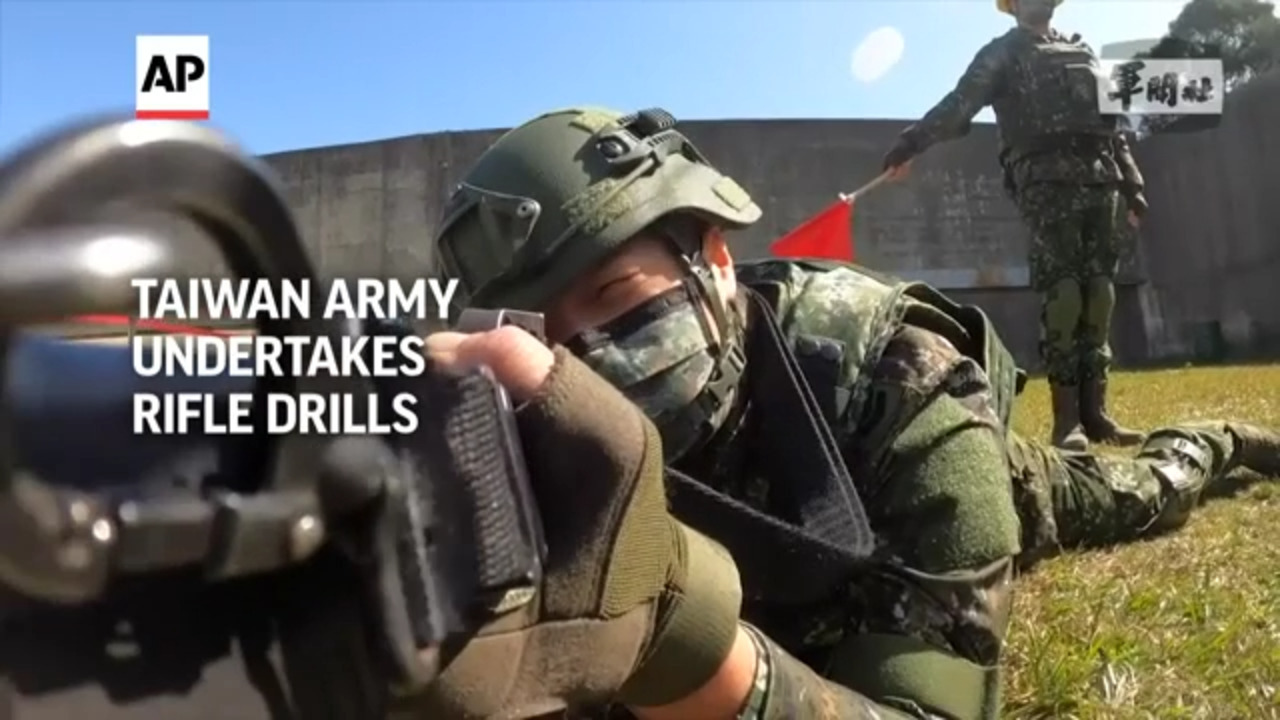
Taiwan’s Army demonstrated a new rifle training program Tuesday that is tailored to the needs of each local solider...

Boeing on Monday hosted a ribbon cutting for a new production area at NASA's Michoud Assembly Facility in New...
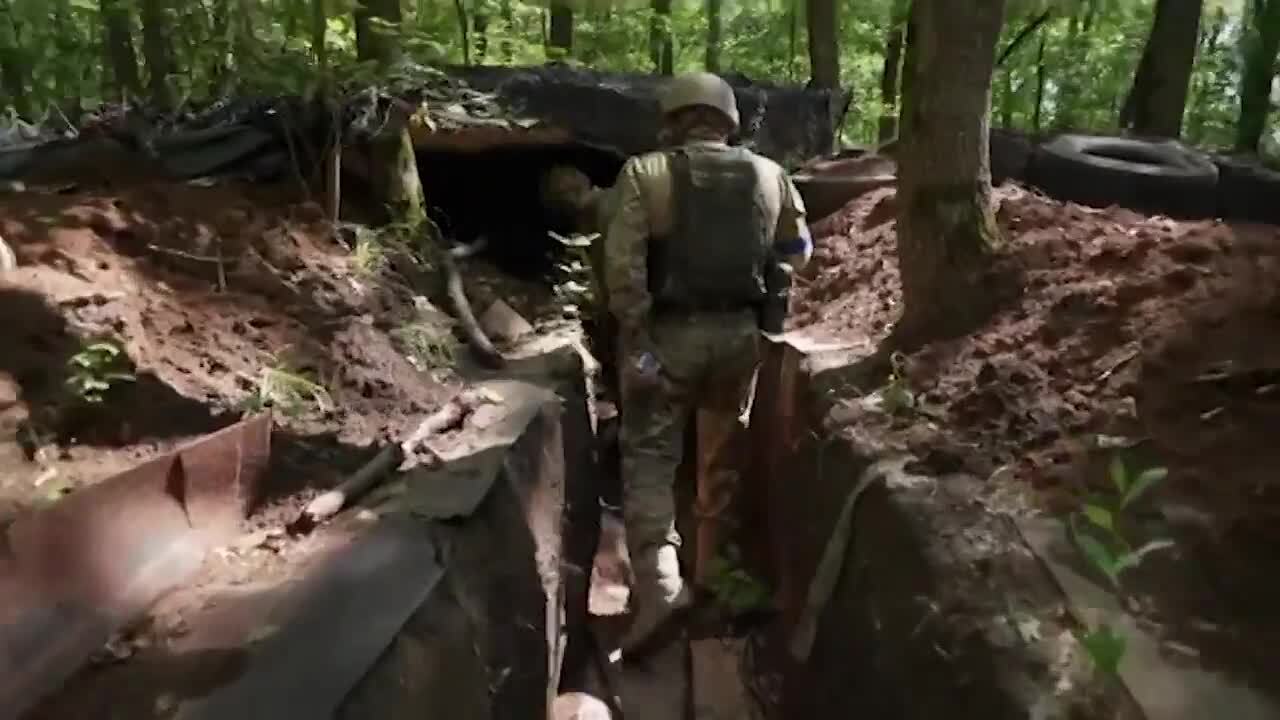
Ukrainian forces used self-propelled artillery in an effort to push Russian forces further away from the country's second largest...
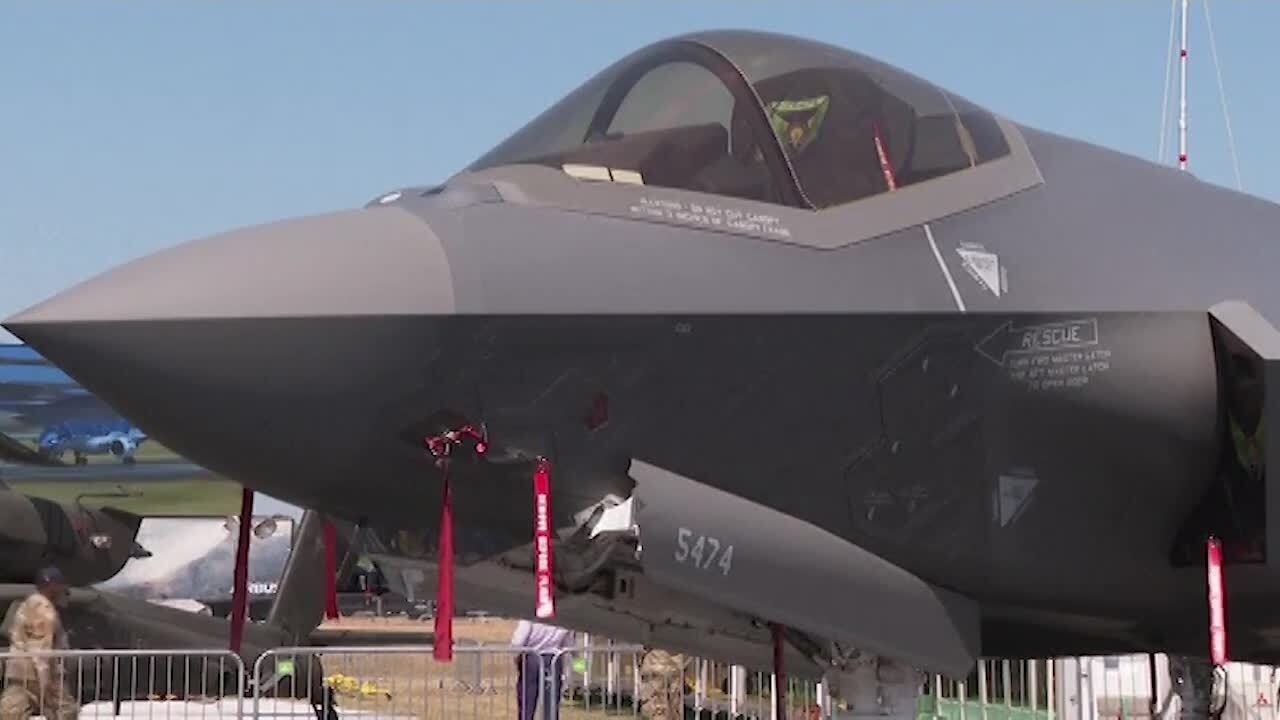
The real-life Top Gun pilots soar through the skies in F-35 fighter jets. These are billed as the most...

Ukrainian servicemen have been using American M777 howitzers on the battlefield as they seek to repel Russian forces in...
Military Technology
- Air Force MQ-9 Crashed in Africa Last Year Due to Engine Failure, Report Details
- The Army Has Officially Deployed Laser Weapons Overseas to Combat Enemy Drones
- Air Force Ospreys in Japan Remain Grounded After Deadly Crash, Even as Marines Return to the Air
- Top General in Mideast Calls for Microwave Weapons for 'Layered' Defense Against Drone Swarms
Acquisition News
- Air Force Wants to Send Historic Number of A-10s to the Boneyard in 2025, Continuing Shift Away from Warthogs
- The Rise and Fall of the Humvee
- When Will Ospreys Fly Again? That's Still a Question Mark After Defense Secretary Briefing.
- Lighter, More Protection: Army Next-Gen Helmet Now Fielded to 82nd Airborne Division Soldiers
Guns & Gear
- The Best Deals on Shooting Gear on Amazon Right Now
- The Best Tactical Gear Deals on Amazon Right Now
- The Best Amazon Holiday Deals for Service Members, Veterans and Their Families
- The Best Military Watch Deals on Amazon Right Now
Latest Equipment News

Nearly 10 hours into the MQ-9's flight, a "propulsion system anomaly" occurred, causing the pilot of the remotely controlled...

NATO Secretary-General Jens Stoltenberg said that “serious delays in support have meant serious consequences on the...

The aircraft carrier USS George Washington is finally underway to its new homeport in Japan, following six arduous years in a...

The U.S. agreed to send 31 Abrams to Ukraine in January 2023 after an aggressive monthslong campaign by Kyiv arguing that the...

The VH-92 Patriot is landing only on paved runways for now, flying missions with White House officials or Secret Service...
The World’s First Hypersonic Cruise Missile Will Fly 20 Times Faster Than the Competition
Hypersonic Attack Cruise Missile (HACM) will be the first scramjet-powered weapon to enter production.
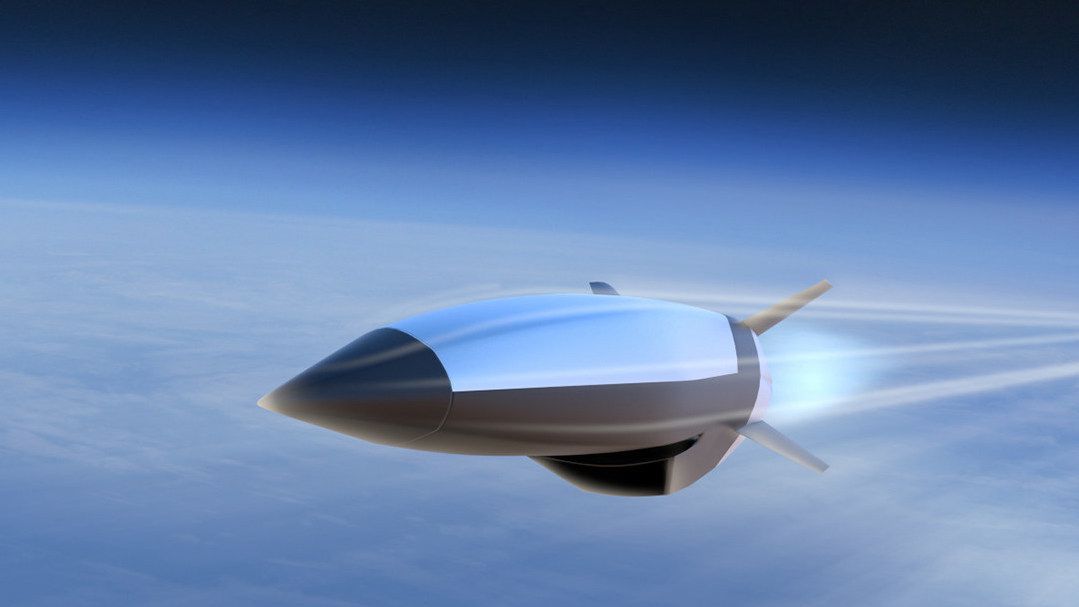
- Unlike most cruise missiles, however, this one travels way faster than the speed of sound , with the capability to fly at speeds in excess of Mach 5.
- Exactly how fast the new Hypersonic Attack Cruise Missile will be remains a mystery.
The Pentagon has plenty of cruise missiles in its arsenal, from the long-serving Tomahawk to the new JASSM-ER . But a new missile set to enter service in 2027 is radically different: the new Hypersonic Attack Cruise Missile (HACM) will fly up to 20 times faster, giving adversaries little time to escape its wrath. HACM will be the first mass-produced weapon to use air-breathing scramjet engines.
Raytheon and Northrop Grumman won a contract worth $985 million to develop the world’s first hypersonic cruise missile. HACM, developed for the United States and Australia, is an air-launched hypersonic cruise missile designed to quickly strike targets on the ground. Under the terms of the contract, the Pentagon should see the first operational missiles in 2027.
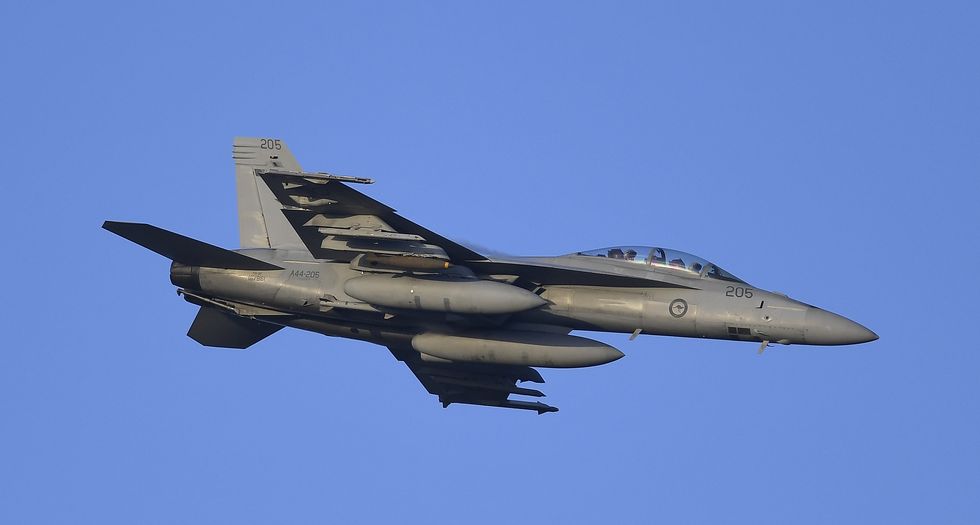
In 2020, the U.S. and Australia jointly began the Southern Cross Integrated Flight Research Experiment partnership, or SCIFiRE. Named after the constellation that appears on Australia’s national flag, SCIFiRE was meant to develop an air-breathing hypersonic weapon system designed to be carried on both U.S. and Australian aircraft, including the F/A-18 Super Hornet , F-35A Joint Strike Fighter , P-8A Poseidon aircraft, and others. The contract will mature the Raytheon SCIFiRE prototype into an actual weapon system.
HACM is a tactical weapon designed to be used on day one of a large-scale conventional conflict . “HACM will provide our commanders with tactical flexibility to employ fighters to hold high-value, time-sensitive targets at risk while maintaining bombers for other strategic targets,” Air Force Chief of Staff Gen. CQ Brown said in an Air Force statement last week.
Traditional cruise missiles are basically pilotless aircraft. Like many aircraft, turbofan engines power cruise missiles, propelling them at subsonic speeds. Cruise missiles fly low to avoid radar detection, and a slower speed helps them fly lower and hug the ground. Tomahawk cruise missiles , for example, fly at an altitude of between 98 and 164 feet at a speed of 550 miles per hour.
HACM is a hypersonic weapon, which means it flies at Mach 5 or faster—but we don’t know exactly how much faster it will fly. Most missiles that remain in the atmosphere, like air-to-air missiles , top out at around Mach 3+. SCIFiRE was descended from the earlier HIFiRE program , which tested a scramjet engine at speeds up to Mach 8.
HACM will be the world’s first operational weapon system to use a scramjet engine . Like turbofan engines, scramjets scoop up oxygen from the surrounding atmosphere to use as fuel. One key difference between the two is that a turbofan engine scoops up oxygen at subsonic speeds, while a scramjet scoops it up at supersonic speeds. More oxygen means more fuel for the scramjet engine, which enables it to propel the missile even faster. According to NASA , scramjet engines should work to at least Mach 15. That translates to 11,509 miles per hour, or fast enough to circle Earth in about two hours.
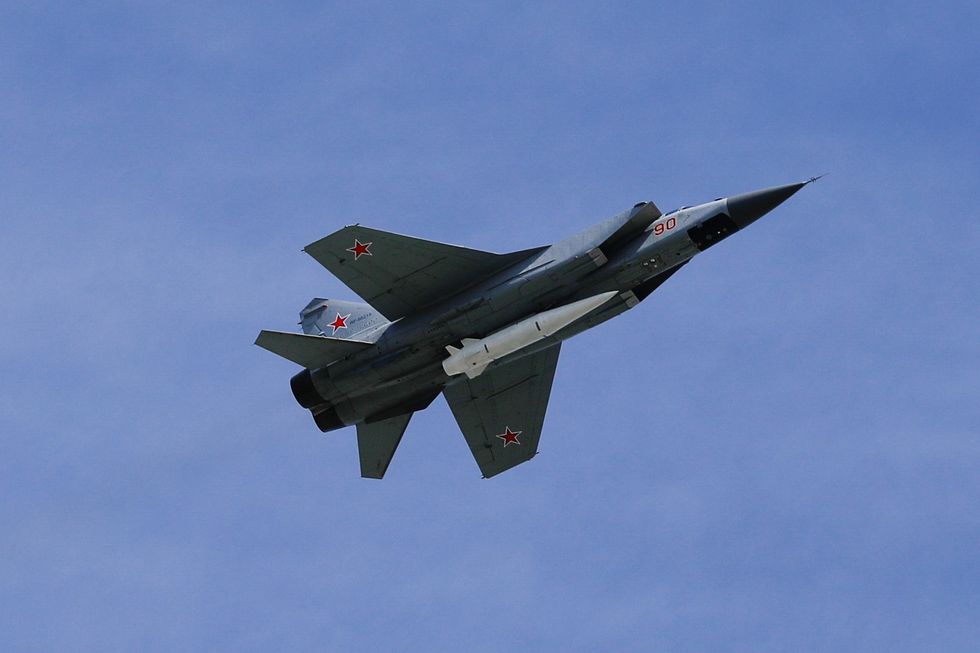
Hypersonic weapons are the new hotness in warfare. Most of the avowed nuclear powers have technically had hypersonic weapons for a half-century or more, as the ballistic missiles that carry nuclear warheads travel at hypersonic speeds, impacting their targets at up to 15,000 miles per hour. This new generation of hypersonic weapons is different in that it is non-nuclear in nature—at least so far—and would be used immediately in a conventional war.
There’s a lot we don’t know about HACM. We don’t know how fast it really flies, or how far it flies. All we know is it is small enough to be carried by a fighter jet and will be ready by 2027. One thing is for sure: HACM is awkward and we need a better name for it.

Kyle Mizokami is a writer on defense and security issues and has been at Popular Mechanics since 2015. If it involves explosions or projectiles, he's generally in favor of it. Kyle’s articles have appeared at The Daily Beast, U.S. Naval Institute News, The Diplomat, Foreign Policy, Combat Aircraft Monthly, VICE News , and others. He lives in San Francisco.
.css-cuqpxl:before{padding-right:0.3125rem;content:'//';display:inline;} Pop Mech Pro: Military .css-xtujxj:before{padding-left:0.3125rem;content:'//';display:inline;}

China Could Rule the Seas With This New Tech

This Is the Most Lethal Submarine in the Sea

The Most Expensive Plane Crash in History

Can America’s Aging F-16 Overpower Russia’s Su-35?

Get to Know the Marines’ Favorite Ride

Meet the Navy’s New Radar-Killing Missile

Could the U.S. Army Fight and Win Without Tanks?

Why This Armored Vehicle Is the Army’s Unsung Hero

Why the U.S. Air Force Wants Flying Jeeps

Everything You Need to Know About Camouflage
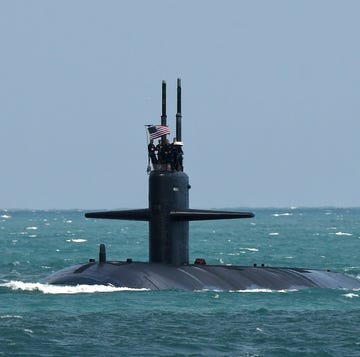
Can We Turn Subs Into Undersea Aircraft Carriers?
Air Warfare
- Cyber (Opens in new window)
- C4ISR (Opens in new window)
- Training & Sim
- Asia Pacific
- Mideast Africa
- The Americas
- Top 100 Companies
- Defense News Weekly
- Money Minute
- Whitepapers & eBooks (Opens in new window)
- DSDs & SMRs (Opens in new window)
- Webcasts (Opens in new window)
- Events (Opens in new window)
- Newsletters (Opens in new window)
- Events Calendar
- Early Bird Brief
- Digital Edition (Opens in new window)
Watch this US Air Force cargo plane launch a cruise missile in Norway
WASHINGTON — The U.S. Air Force has for the first time in an overseas test used its Rapid Dragon system , in which cruise missiles on pallets are launched from the back of a mobility aircraft.
An MC-130J Commando II from the 352nd Special Operations Wing launched a Joint Air-to-Surface Standoff Missile-Extended Range cruise missile using the system nicknamed “bomb bay in a box” in a range over the Norwegian Sea on Wednesday, the Air Force Research Laboratory said.
Dean Evans, the program manager for Rapid Dragon , said the successful test shows how quickly the program is progressing, noting that it moved from a concept on paper to a live-fire test in two years.
“Now, less than three years from the program’s inception, Rapid Dragon is being used by [U.S. Special Operations Command Europe] in the Arctic Circle,” Evans said in a release. “This is a testament to the team’s focus on rapid fielding to meet warfighter needs.”
The command posted a video online Wednesday that shows the test process at Norway’s Andøya Space Defense Range from multiple perspectives. A parachute attached to the Rapid Dragon deployment box is tossed from the open cargo bay of the MC-130, which then unfurls and swiftly pulls the pallet out of the aircraft.
The hurtling box sheds its deployment parachute and deploys a quartet of other parachutes that steady it. When the deployment box is vertical, it releases a JASSM-ER missile downward. Within seconds, the missile’s wings and tail snap open, and its engine engages, leaving a trail of exhaust in its wake.
This was the first live-fire Rapid Dragon test since the Air Force destroyed a target in the Gulf of Mexico in December 2021, and the first time the concept was used outside of the continental United States, the Air Force Research Lab said.
A longer video of the test posted by the Pentagon showed the cruise missile traveling over the sea for about 2 minutes before detonating. When asked if a target was destroyed, the lab did not respond directly, but said that all objectives were met.
An airman with the 352d Special Operations Wing conducts preflight operations on an MC-130J Commando II during the Atreus exercise at Andøya Space Defense Range in Norway on Nov. 8, 2022. Two U.S. Air Force Special Operations Command wings partnered in a total force initiative to conduct the first live-fire demonstration in the European theater of Rapid Dragon, a long-range palletized munitions system, in the U.S. European Command's area of responsibility. (Tech. Sgt. Brigette Waltermire/Air National Guard)
Additional photographs posted by the Air Force showed American and Polish airmen training to load palletized munitions onto a Polish C-130. That training took place Tuesday in Powidz, Poland.
The lab said the program has so far focused on kinetic munitions, but is now turning its attention to adding “palletized effects.” Those effects include intelligence, surveillance and reconnaissance platforms, cargo resupply, and humanitarian aid delivery, the release said.
The Air Force hopes this concept will allow the U.S. and its allies to turn cargo aircraft into heavily armed bomb trucks that can engage enemies at a safe distance, giving combatant commanders more options to deliver firepower.
The lab said this test took place as part of U.S. European Command’s operational series Atreus, which aims to conduct training events on capabilities found in Europe. The 352nd Special Operations Wing is based at RAF Mildenhall in England, and the MC-130 was from the wing’s 67th Special Operations Squadron.
This test was the seventh Atreus event, and in addition to Norway also included allies from the United Kingdom, Poland, and Romania.
Previous Atreus training events focused on using the High Mobility Artillery Rocket System along with allies from Romania, the U.K., Sweden and Latvia.
Stephen Losey is the air warfare reporter for Defense News. He previously covered leadership and personnel issues at Air Force Times, and the Pentagon, special operations and air warfare at Military.com. He has traveled to the Middle East to cover U.S. Air Force operations.
More In Air Warfare
Austin calls European allies, seeking more Patriots for Kyiv
The u.s. secretary of defense has held multiple one-on-one calls with european allies this week, during which he raised the topic..
Defense Innovation Unit moves to ease commercial drone certifications
Diu wants to improve its process for vetting commercial drones, with the goal of making it easier for companies to sell their systems to the u.s. military..
Saab unveils technology incubator using Enforcer 3 as test bed
“we are trying to get capability to the fleet in months,” said erik smith, the chief executive of saab's u.s. branch..
Lockheed to supply Australia with air battle management system
Overhauling australia’s overhead defenses is expected to generate hundreds of local jobs as well as open the door to a multibillion-dollar export market..
Defense Innovation Unit prepares to execute $800 million funding boost
Diu director doug beck said he doesn’t foresee any issues with quickly putting to work the $983 million in fy-24 funding congress provided in march., featured video, military times’ 2024 service members of the year.
From combat medic to Paralympian: What drives Ellie Marks?
The Navy petty officer ensuring the Carney stays focused on the fight
Ukraine-born airman’s translations aided allied efforts as war erupted
Trending now, sierra nevada wins $13b contract to build air force ‘doomsday plane’, france and germany sign off on future battle tank system, us army to shift aviation force structure back to tailored brigades, marine unit found metal shavings in f-35 fuel, plastic tool in wing, us army to field long-range combat aircraft to first unit in fy31.
BrahMos: Everything you need to know about the cruise missile system
Defence iq talks to the jv’s general manager and marketing director praveen pathak on brahmos' current status and future plans..

Chasing the world’s fastest jet-launched cruise missile

BRAHMOS BrahMos first drop and launch from a Su-30 MK I
Defence IQ : Typically, a weapon of eight metres in length and close to three tons in weight is typically carried by bombers like the B-1B or Tu-160. This makes the Sukhoi Su-30MK very unique as it is able to carry the BrahMos… P. Pathak : Yes, this is only possible with a unique platform like the Indian Sukhois, itself a class of its own among the fighters. BrahMos is a huge achievement of Russian- Indian military and technical cooperation. These successful achievements from India’s DRDO. Defence Research & Development Organisation] and Russia’s Mashinostroyenia have spread progress and innovation across facilities in both nations. Defence IQ : After several years, tests and trials, can you tell us about the journey to where you currently are with the project? P. Pathak : I’ll start with a brief history. The missile was jointly developed in the late 1990s and 2000s by the Research & Production Association of Machine-Building [in the town of Reutov near Moscow] and our DRDO, thanks to an agreement between the governments of Russia and India, signed on February 12, 1998. BrahMos is a modification of Sovietera anti-ship missiles [Oniks, Yakont] developed by the Reutov Design Bureau in the late 1980s. The name derived from India’s Brahmaputra and Russia’s Moskva rivers. The first test launch was conducted on June 12, 2001, at the Chandipur range in Odisha, India, and subsequently, the missiles began production at enterprises in both countries. Development of these cruise missiles is a natural progression for India, in seeking to develop various platforms for its military arsenal, either on its own or with a partner – but nevertheless, in India. BrahMos is technically a ramjetpowered supersonic cruise missile with a solid propellant booster that can be launched from land-based canisters, submarines, ships and now aircraft. It travels at speeds of Mach 2.8 to 3.0 but is being upgraded in the future to travel at speeds faster than Mach 5.0. for the hypersonic variant.
"BrahMos is technically a ramjet-powered supersonic cruise missile with a solid propellant booster"

BRAHMOS Brahmos has been fired successfully from Indian submarines
Defence IQ : An Indian pilot in Bahrain stated that the latest developments have been particularly challenging and lengthy. Is that the experience you’ve had? P. Pathak : He’s right! Integration efforts onto the flying platform were very complex involving mechanical, electrical and software modifications of the aircraft. The Indian Air Force [IAF] was involved in the development process, as software development of the aircraft was undertaken by the IAF engineers. HAL [state-run Hindustan Aircraft Ltd.] carried out the mechanical and electrical modifications on the aircraft. In addition, the air-launched variant had to be made 500 kg lighter than the land/naval variants. One of the major challenges DRDO scientists had to overcome was the optimisation of transfer-alignment inertial sensors. Thankfully, the experience of the IAF flight test crew and the dedicated and synergetic efforts of the IAF, DRDO and HAL ensured that the integration was smooth. Altogether, it has proven India’s ability to undertake such complex integrations on its own.
"One of the major challenges DRDO scientists had to overcome was the optimisation of transferalignment inertial sensors"
Defence IQ : What tests were undertaken before serial production? P. Pathak : Serial production has been ongoing for the Army and Navy for more than 10 years. Regarding the air variant of BrahMos, there are two important dates. In June 2016, two test-pilots of the ASTE [Aircraft and Systems Testing Establishment, a premier IAF, at Bengaluru] carried out the first flights and carriage-tests with a full weight test-vehicle of BrahMos on a Su-30MKI. RECOMMENDED: How capable is the S-400 missile system? And in November 2017, the IAF successfully fired the BrahMos-A in an anti-shipping configuration from the same frontline fighter aircraft, off the Eastern Coast in the Bay of Bengal. The launch was smooth; it fell for about 100 to 150 metres, ignited and followed the desired trajectory, before directly hitting the target ship. This only succeeded with dedicated support from the Indian Navy, by way of ensuring availability of the targets and a large number of monitoring ships to ensure data collection and range safety clearance. Defence IQ : Excellent! Can you tell us about the accuracy of the 3-tonne missiles? P. Pathak : Recently, a final phase steep dive test of the missile was conducted and it proved to have landed within a range of 10 metres of the targeted area, fired over a range of almost 300 km. Defence IQ : Impressive! With regards to ranges, there was a report that BrahMos now benefits from India’s access to the 34-nation Missile Technology Control Regime. Is this the case? P. Pathak: Yes. In June 2016 India was bound by restrictions that limited the range of the operational missile to less than 300km. We had already experimented with the range from 290km to 400km and then successfully first testfired a variant in March 2017. But, increasing the missile’s range from 400km to a further 800km is now possible after India’s induction into the MTCR. And that is being considered…
"The IAF wants two Squadrons of Su-30 MKIs to be modified to accommodate BrahMos, but HAL is proposing to build new aircraft"

BRAHMOS A Brahmos missile on a HAL Tejas fighter
Defence IQ : Interesting! What can you tell us about the current versions employed by the Army and Navy? P. Pathak : Currently, the Army is equipped with three regiments of Block-III BrahMos, with two fully operational. Last year there was a successful test-firing from a test range at Chandipur along the Odisha coast, to validate some new features like an indigenous Indian seeker. It was to conduct and validate life extension technologies, developed for the first time in India. Our Minister of Defence, Nirmala Sitharaman, congratulated the DRDO scientists for the successful launch with new technology. RECOMMENDED: The future of artillery and long range missile systems: Industry outlook This will result in huge savings in replacement missiles already in the inventory of Indian Forces. Regarding the Navy, induction of the first version of the missile system in the Indian Navy began on [destroyer] INS Rajput, back in in 2005. After two successful test trials from INS Kolkata in June 2014 and February 2015 and a test firing from INS Kochi in September 2015, the newly commissioned ship’s systems were validated. Additionally, we’re starting to see good results incorporating BrahMos into submarines with the first firings from a submerged platform having already taken place. Defence IQ : The two surface ships you mentioned – are they carrying BrahMos in launchers or vertically? P. Pathak : In both, actually. There are older vessels that carry them in side-launchers [INS Ranvir D54, a ‘Kashin’ Class Destroyer Project 61ME], but some have been fitted with a module of the ‘Universal Vertical Launcher’, which is very state-of-the-art. Last October, the Cabinet Committee on Security [through which all Indian defence procurement has to be approved by Prime Minister N. Modi], has cleared the procurement of four Krivak-class frigates from Russia. These will be BrahMos-armed in vertical launchers, two to be built in a Russian shipyard [at Yantar in Kaliningrad], and the other two in India [Goa Shipyard Ltd.]. Defence IQ : And what about the future? At AERO-INDIA there was a blue NG [Next Generation] version shown, under the much smaller LCA [light combat aircraft] Tejas fighter. Is that likely to appear soon? P. Pathak : Quite a lot of planning is ongoing right now. BrahMos- Aerospace is actually working on several future versions, which shouldn’t be confused. A smaller version of the missile, termed Mini BrahMos, will be half the weight of the present missile but with more speed. This is part of independent research by the company to explore if a missile with smaller size can be as effective. Then there is – or will come – BrahMos NG , the latest development that will be launched from submarine torpedo-tubes, and the NG-A, launching also from the Su-30MKI as well as from the LCA Tejas and MiG-29s. A big difference is that, on the Sukhoi, up to five BrahMos-NG missiles could be carried, with two missiles on each wing and one under the fuselage. The MiG-29 and the LCA would carry two. The digitized NG means it comes with a digital fuel injection system that will increase thrust, unlike the current versions that have a mechanical fuel injection system. It also will be even faster, up to Mach 3.5. Defence IQ : So it will be smaller, but will retain the same range? P. Pathak : Yes. BrahMos-NG will have same 290 km range, but it will weigh around 1.5 tons and be 5 meters in length and 50 cm in diameter, making it 50% lighter and three meters shorter than its predecessor. However, having a smaller radar cross-section makes it super fast and harder to detect by anti-missile systems. Defence IQ : Which means it can use smaller platforms and lighter vehicles? P. Pathak : The land variant of the NG missile will be hosted on 8x8 launch vehicles, unlike the older version which used 12x12 launch vehicles. We had earlier designed it for the Navy, but this time it could also develop into an air-to-air version, against slow manoeuvring force multipliers, deep within enemy territory. Defence IQ : Could it serve as an air-to-air AWACS killer even after being fired from the Indian side of the border? Similarly, one supposes it could target enemy refuelling aircraft or transports… P. Pathak : That is within the scope of the system and the engineers are quoting it as quite possible. Defence IQ : What is the current timeframe projected? P. Pathak : A first test firing of the sleeker, lighter NG version could take place within two years, with feasibility studies showing the way forward to integrate it onto the LCA. They have found what modifications need to be done to the LCA’s wing to carry the NG, as well as some changes to the missile. RECOMMENDED: How the APKWS is improving the Hydra-70: BAE Systems interview Full integration, which we think can be expected within four years, will also boost the export potential of the fighter jet, as it would resemble a potent indigenous weapon system that can take down land targets or ships at a distance of almost 300 km.
"Research and development are already on their path to developing the hypersonic variant, called BrahMos II"
Defence IQ : And what about the hypersonic capability? P. Pathak : Research and development are already on their path to developing the hypersonic variant, called BrahMos II. It is projected to double the speed of the current BrahMos, potentially up to Mach 7. Defence IQ : And that will also be named the ‘BrahMos ER’? P. Pathak : The abbreviation ‘ER’ refers to the extended-range version up to 800 km, but not the hypersonic BrahMos-II, which goes even further. We calculate that an 800 km version might be ready for testing by end of this year.
Upcoming Events
Future artillery.
21 - 23 May, 2024 Novotel Paris Centre Tour Eiffel

Space Operations Summit
22 - 23 May, 2024 Copthorne Tara Hotel, London, UK

Surface, Air and Seabed Warfare
18 - 19 June, 2024 Portsmouth Marriott Hotel, UK

Full Spectrum Air Defence
24 - 27 June, 2024 Hilton Syon Park, London

Defence Transformation
24 - 26 September 2024 Hilton London Syon Park, London, UK

Countering Explosive Threat & Demining
24 - 25 September, 2024 Copthorne Tara Hotel London Kensington, London, United Kingdom

Subscribe to our Free Newsletter
Insights from the world’s foremost thought leaders delivered to your inbox.

Latest Webinars
Why does the ecological transition matter for military vehicle manufacturers.
2022-10-25 09:00 AM - 10:00 AM BST

Securing the Defence Industrial Base: Mitigating Risk and Delivering Resiliency in Physical and Digital Supply Chains
2022-04-21 12:00 PM - 01:00 PM EST

Zero Trust and Air Force Missions
2021-07-27 11:50 PM - 01:30 PM EDT

RECOMMENDED

FIND CONTENT BY TYPE
- Conferences
- Market Reports
- Whitepapers
- Post-Show Reports
Defence IQ COMMUNITY
- Events Calendar
- Authors & Submission Guide
- User Agreement
- Cookie Policy
ADVERTISE WITH US
Reach Defence professionals through cost-effective marketing opportunities to deliver your message, position yourself as a thought leader, and introduce new products, techniques and strategies to the market.
JOIN THE Defence IQ COMMUNITY
Join Defence IQ today and interact with a vibrant network of professionals, keeping up to date with the industry by accessing our wealth of articles, videos, live conferences and more.

Contact Us | About Us
Become a Member today!
PLEASE ENTER YOUR EMAIL TO JOIN FOR FREE
Already an IQPC Community Member? Sign in Here or Forgot Password Sign up now and get FREE access to our extensive library of reports, infographics, whitepapers, webinars and online events from the world’s foremost thought leaders.
We respect your privacy, by clicking 'Subscribe' you will receive our e-newsletter, including information on Podcasts, Webinars, event discounts, online learning opportunities and agree to our User Agreement. You have the right to object. For further information on how we process and monitor your personal data click here . You can unsubscribe at any time.
Britain plans to equip its armed forces with a homegrown hypersonic cruise missile by the end of the decade, according to a report.
Military chiefs are under pressure to catch up with China, Russia and the US by developing a weapon capable of flying at speeds higher than Mach 5 - five times the speed of sound, according to The Sunday Telegraph.
The Ministry of Defence wants the missile to be designed and built in the UK and to enter service by 2030.
Plans are at an early stage, the newspaper reported, although there is no decision on whether the missile will be launched from land, sea or air.
It comes after Prime Minister Rishi Sunak pledged to spend 2.5% of gross domestic product on defence by 2030.

Keep up with all the latest news from the UK and around the world by following Sky News
Ballistic weapons can also reach hypersonic speeds but the difference is in manoeuvrability - ballistic weapons generally have fixed paths but the path of a hypersonic weapon can be changed after launch, making it difficult to destroy.
The US, Russia and China are the main players in the hypersonic weapons race but other countries, such as North Korea, claim to have tested hypersonic weapons.
More on Defence

Adam Boulton: Tories trying to open election divide over defence, but Sir Keir Starmer says he is not Jeremy 'Stop the War' Corbyn

A reset week for Rishi but what will the local elections bring?

Rishi Sunak will take the defence wins in Europe - but returns to tricky local elections for the Tories
Related Topics:
- Ministry of Defence
Read more: Sean Bell: Putin's 'undefeatable' missile was a costly illusion US tests hypersonic weapon with speeds 'five times greater than speed of sound'
The development of hypersonic capabilities is part of Pillar Two of AUKUS - a defence and security pact between the UK, Australia and the US.
Last month the US tested a hypersonic cruise missile on an atoll in the Marshall Islands in a message to its rival in the Pacific - China. It is the latest in a number of hypersonic weapons tests the country has completed in recent years.
A spokesperson for the MoD would not comment in detail on the development of Britain's hypersonic missile capability, citing national security, but confirmed "hypersonic technologies to further develop UK sovereign advanced capabilities" were being pursued.
"We continue to invest in our equipment to meet current and future threats," they added.
Related Topics
- Missiles of the World
Kh-55 (AS-15)
The Kh-55 (NATO: AS-15 “Kent) is an air-launched cruise missile developed by the Soviet Union starting in 1971. Originally designed as a strategic system capable of delivering a nuclear warhead 2,500 km, the missile has given rise to several variants. These include the Kh-55SM, an extended range version; the Kh-555, a conventional version; and the Kh-65SE, a conventional version designed for export.
Kh-55 (AS-15 “Kent”) at a Glance
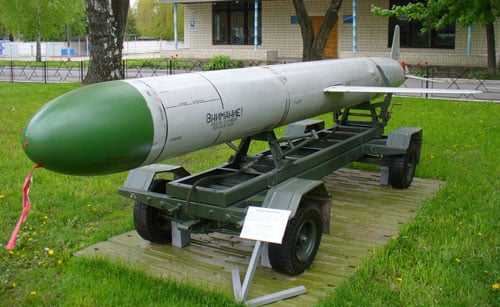
Kh-55 Development
The Kh-55SM is an extended range version. To achieve the extra range, conformal fuel tanks are mounted on both sides of the fuselage. It also has a more powerful engine, producing 450 kg of thrust. See below for the main differences.
- Slightly larger body diameter due to the fuel tanks, 0.77 m.
- Increased launch weight, 1,500 kg.
- Increased range, 3,000 km.
The Kh-555 is a conventional variant of the Kh-55. The nuclear warhead has been replaced by a 400 kg unitary HE, penetration HE, or submunitions warhead. Other notable changes include the following:
- Larger conformal fuel tanks (compared to the Kh-55SM).
- Reduced radar cross-section.
- Improved accuracy.
- Increased range, 3,500 km.
Kh-65SE and Kh-SD
Similarities with iran’s soumar.
In 2000, reports suggest that Ukraine exported six Kh-55SM missiles to China, and in 2001, exported another six to Iran. Two Russian nationals, with the help of at least one Ukrainian official, created a series of front companies to hide and facilitate the transaction. 6 This is considered one the worst cases of missile proliferation in modern times given the advanced capabilities of the Kh-55 series.
On March 8, 2015, Iran unveiled the Soumar ground-launched cruise missile . The origin of the Soumar appears to be from the nuclear capable Russian Kh-55. In 2005, Ukraine acknowledged that 12 Kh-55’s (without nuclear warheads) were illegally sold to Iran in 2001 through a black market counterfeit operation.
- “Kh-55 (AS-15 ‘Kent’/Kh-555/RKV-500/Kh-65)” in IHS Jane’s Weapons: Strategic 2015-2016, ed. James C. O’Halloran (United Kingdom: IHS, 2015), 184-86.
- Carlo Kopp, “Soviet/Russian Cruise Missiles” Air Power Australia. April 2012, http://www.ausairpower.net/APA-Rus-Cruise-Missiles.html#mozTocId152650.
Israel’s Iron Dome
How layers of air defences protected the country against the biggest onslaught of missiles and drones in its history
Israel used all four tiers of its air defences — and help from allies — to block Iran's mass drone and missile attack on Israeli territory on April 13, officials say.
The Israeli and U.S. governments said a combination of air-, sea- and ground-launched missiles destroyed nearly all of the hundreds of weapons Iran sent toward Israel. U.S. Central Command, which oversees military operations in the region, said U.S. forces destroyed more than 80 drones and at least six ballistic missiles.
Israel has been honing its air defences since enduring Iraqi Scud missile salvoes in the 1991 Gulf War, said Dr. Yehoshua Kalisky, a senior researcher at the Institute for National Security Studies in Tel Aviv. That work resulted in a multi-layered air defence network linked by central control nodes, he said.
The outer layers are the Arrow-2 and Arrow-3 systems, designed to intercept ballistic missiles fired from thousands of kilometres away. The Arrow-2 is optimised for destroying missiles in the atmosphere, while the Arrow-3 can hit them while they are coasting in space. Both are meant to minimise the chance that warheads or payloads from the destroyed targets cause harm on the ground.
David’s Sling provides the middle layer of protection, Kalisky said, and is meant to engage shorter-range ballistic missiles launched 100km to 200km (62 to 124 miles) away. Developed and manufactured jointly by Israel’s state-owned Rafael Advanced Defense Systems and the U.S. Raytheon Co, David’s Sling can also intercept aircraft, drones and cruise missiles.
The final ring of protection comes from what is most likely the best-known and most-used of Israel’s air defence systems: the short-range Iron Dome, which is optimised for destroying small, slow, unguided targets such as short-range rockets and drones, he said.
A graphic shows four types of interceptor missile systems Israel uses and the ranges within which they operate.
Iron Dome was built to intercept the kind of low-tech rockets fired by the Palestinian Islamist movement Hamas in Gaza. Developed by state-owned Rafael Advanced Defense Systems with U.S. backing, it became operational in 2011. Each truck-towed unit can direct radar-guided missiles against short-range threats such as rockets, mortars and drones.
A key part of Iron Dome is its control system’s ability to discern what incoming targets pose a threat. If an adversary’s rocket will land harmlessly - in an unpopulated area or in the sea, for instance - it will not be intercepted. That makes it ideal for “saturation” scenarios in which an enemy tries to fire so many missiles that not all of them will be shot down, said Uzi Rubin, a senior researcher at the Jerusalem Institute for Strategy and Security.
“Its radar and battle management systems are designed to handle a huge number of targets simultaneously,” Rubin said. “Each launcher can fire its full load of 20 interceptors within 10 seconds or so.”
When Hamas began its attack on Israel in October 2023, it fired several thousand rockets into Israel, with a reported interception rate of about 90%.
Rafael says that over the course of its service, Iron Dome has intercepted thousands of targets.
The company says it delivered two Iron Dome batteries to the U.S. Army in 2020. Ukraine is seeking the system to protect cities in its war with Russia, but Israel has so far only provided Kyiv with humanitarian support and civil defence supplies.
A video shows the sky over Jerusalem at night during Iran’s attack. Missiles from Israel’s Iron Dome defence system are launched to intercept incoming missiles or drones.
How it works
Iron Dome was originally billed as providing city-sized coverage against rockets with ranges of 4 to 70 km (2.5 to 43 miles), but experts say this has been expanded as the system has been improved over time.
A graphic shows parts of Israel’s missile defence system. The radar detects incoming targets within a 100 km radius and provides midcourse guidance for the Tamir interceptor missile. The battle management control system (BMC) calculates the impact point of an incoming missile and only intercepts those that will fall in a protected area. Each missile launcher can fire up to 20 interceptor missiles against incoming targets.
The systems work to create a protective space above Israeli towns and settlements. Any incoming projectile determined to be a threat can be targeted.
A graphic shows a city being protected from attack by Iron Dome. Iron Dome is a mobile system designed to intercept short-range rockets and artillery shells that endanger populated areas in Israel. Each battery – a combination of missile launcher, control station and radar – can defend about 150 square kilometres (58 square miles), about the size of a medium-sized city.
The mission of shooting down numerous cheap, low-end threats means Iron Dome’s interceptors must also be inexpensive. Each Tamir missile costs about $50,000, Kalisky said, which is low relative to a multimillion-dollar Patriot missile. The price of not stopping an incoming threat must also be factored in, said Ankit Panda of the U.S.-based Carnegie Endowment for International Peace.
“It’s not that Iron Dome is a 100% effective capability, but you have to consider the alternative,” of much more damage from enemy rockets, he said.
A graphic shows a Tamir interceptor missile and how it works. The solid propellant motor in a Tamir missile allows it to reach Mach 2. The proximity fuse warhead activates as the missile approaches its target. Within 10 metres (33 feet) of the target, the warhead detonates, destroying the enemy missile with fragments of high-speed metal.
The high rate of fire, especially during a full-blown conflict, puts a strain on the ammunition supply of any air defence system, Kalisky said. That is why saturation attacks are an attractive tactic, and why countries must stockpile air defence missiles, he added.
“It’s a problem with any type of ammunition,” he said. “You have to prepare in advance. You have to prepare for that kind of attack.”
Israel does not publicise the number of Tamir interceptors it produces or stockpiles. It also does not disclose the number of missiles fired by its air defence systems, although Kalisky said Iron Dome is designed to fire two missiles at each target.
The layers of defences and the use of systems tailor-made for Israel’s specific situation make Iron Dome especially potent, Panda said.
“Israel I think has the most effective missile defence solution for the threats it faces as a country,” he said. “It’s been pretty well established that Iron Dome has a concept of operation that is incredibly effective.”
Title photo
Israel's Iron Dome anti-missile system intercepts rockets launched from the Gaza Strip, as seen from the city of Ashkelon, Israel, Oct. 9, 2023. REUTERS/Amir Cohen
Center for Strategic and International Studies (CSIS)
Simon Scarr, Jon McClure and Ros Russell
Advertisement
Supported by
Israel’s Strike on Iran Highlights Its Ability to Evade Tehran’s Air Defenses
The retaliatory attack damaged a defense system near Natanz, a city in central Iran that is critical to the country’s nuclear weapons program.
- Share full article

By Farnaz Fassihi , Ronen Bergman , Eric Schmitt and Luis Ferré-Sadurní
An Israeli airstrike on Iran on Friday damaged an air defense system, according to Western and Iranian officials, in an attack calculated to deliver a message that Israel could bypass Iran’s defensive systems undetected and paralyze them.
The strike damaged a defensive battery near Natanz, a city in central Iran that is critical to the country’s nuclear weapons program, according to two Western officials and two Iranian officials. The attack — and the revelation on Saturday of its target — was in retaliation for Iran’s strike in Israel last week after Israel bombed its embassy compound in Damascus. But it used a fraction of the firepower Tehran deployed in launching hundreds of drones and missiles at Israel.
The strike on Friday was the latest salvo in a series of tit-for-tat attacks between the two countries this month that have heightened fears of a broader regional conflict. But the relatively limited scope of Israel’s strike and the muted response from Iranian officials seem to have eased tensions.
Iran and Israel have conducted a yearslong shadow war , but the conflict intensified on April 1, when Israeli warplanes killed seven Iranian officials, including three senior commanders , at an Iranian diplomatic compound in Syria, which Israel asserts was used as a military site. Iran responded last week by firing a barrage of drones and cruise and ballistic missiles at Israel, almost all of which were shot down by Israel and its allies. But the strikes nevertheless rattled Israelis.
That attack was Iran’s first-ever direct assault on Israeli soil, thrusting the countries’ clandestine warfare — long fought by land, air, sea and cyberspace — into open view. The Israeli government vowed to respond, even as world leaders and Western allies, including the United States, rushed to de-escalate the situation, urging Israel not to respond in a way that could lead to a regional war.
Though Israel’s leaders came close to ordering a more extensive attack on Iran, the Friday attack appeared calibrated to send a warning about Israel’s military capabilities — but without further raising tensions as Israel continues to fight Hamas in Gaza.
The two Iranian officials who discussed the Israeli attack said that Israel had struck an S-300 antiaircraft system at a military base in the province of Isfahan. The officials’ account was supported by satellite imagery analyzed by The New York Times , which showed damage to the radar of an S-300 system at the Eighth Shekari Air Base in Isfahan.
It was unclear precisely what sort of weapon struck the S-300 system. Three Western and two Iranian officials confirmed on Friday that Israel had deployed aerial drones and at least one missile fired from a warplane. Previously, Iranian officials had said the attack on the military base had been conducted by small drones, most likely launched from inside Iranian territory.
Two Western officials said that a missile was fired from a warplane far from Israeli or Iranian airspace, and that the weapon included technology that enabled it to evade Iran’s radar defenses. The two Iranian officials said the military had not detected anything entering the country’s airspace on Friday, including drones, missiles or aircraft.
The efforts to ratchet down tensions between Israel and Iran played out as Israel’s war against Hamas, now in its sixth month, continued on Saturday with reports of a deadly assault in southern Gaza.
Israeli airstrikes in Rafah on Saturday killed at least 10 civilians, including women and children, according to Palestinian state media, sending fear through an area where more than a million Palestinians have been displaced.
Palestinians have been bracing for weeks for an Israeli ground offensive on Rafah, the southernmost part of Gaza, where a majority of the strip’s 2.2 million residents have fled after being forced from their homes. Israel’s bombardments and ground invasion have killed more than 30,000 people, according to local officials.
The Israeli airstrikes on Saturday hit two homes, and missiles and artillery struck other areas of Rafah and the surrounding area, according to the Wafa News Agency. The Israeli military did not immediately comment on the strike.
“It was like an earthquake,” Mohammad al-Masri, 31, said of the shaking from the strikes.
The first strike hit just past midnight, and the second one soon after, said Mr. al-Masri, an accountant who was sheltering with his family in a tent in a large encampment in Rafah.
“When we hear these strikes, we don’t know what to do,” he said. “Everyone is saying the same thing: ‘Where can we go?’”
Prime Minister Benjamin Netanyahu has said that Israel’s military plans to invade Rafah to “complete the elimination of Hamas’s battalions” and destroy its tunnel networks. World leaders, including President Biden, have urged Israel not to invade the city because of the risks of heavy civilian casualties.
About 500 miles away, Ismail Haniyeh, the political leader of Hamas, traveled to Turkey on Saturday to meet with President Recep Tayyip Erdogan, who has strongly condemned Israel and its leaders since the war began in October.
Turkey was once Israel’s closest friend in the Muslim world, but the relationship has grown increasingly turbulent since Israel’s invasion of Gaza. Mr. Erdogan has backed the Palestinian cause, which has widespread public support in Turkey, defended Hamas since the Oct. 7 attack and strongly condemned Israel and its leaders.
On Saturday, Mr. Erdogan’s office said the two leaders had discussed Israeli attacks against “Palestinian land, primarily against Gaza; what is needed to be done for the humanitarian aid to reach Gaza adequately and without interruption.”
After the meeting, Mr. Erdogan told reporters he would use every opportunity to draw attention to the suffering in Gaza, and that he hoped Israel would eventually be held accountable.
“Israel will certainly pay the price of the atrocities it has been inflicting on Palestinians one day,” Mr. Erdogan told reporters.
Earlier on Saturday, one person was killed and eight were injured in an explosion at a military base in Babylon Province, Iraq, that was used by an Iranian-backed armed group, Harakat al Nujaba, according to Iraq’s military command.
No one immediately claimed responsibility for the strike.
In a carefully worded statement, Iraq’s military did not attribute the explosion to an air attack with a missile or a drone. Privately, however, military officials said it appeared that at least one projectile had hit inside the perimeter of the base. A video taken shortly after the blast and posted on social media showed damaged buildings and a large crater filled with rubble. A second video showed several parts of the base on fire.
The U.S. military, which has previously carried out strikes on Iranian-backed armed groups in Iraq, said in a statement shortly after the attack that it had not participated in strikes on any locations in Iraq. The Israeli military declined to comment.
Liam Stack , Raja Abdulrahim and Alissa J. Rubin contributed reporting.
Farnaz Fassihi is the United Nations bureau chief for The Times, leading coverage of the organization, and also covers Iran and the shadow war between Iran and Israel. She is based in New York. More about Farnaz Fassihi
Ronen Bergman is a staff writer for The New York Times Magazine, based in Tel Aviv. His latest book is “Rise and Kill First: The Secret History of Israel’s Targeted Assassinations,” published by Random House. More about Ronen Bergman
Eric Schmitt is a national security correspondent for The Times, focusing on U.S. military affairs and counterterrorism issues overseas, topics he has reported on for more than three decades. More about Eric Schmitt
Luis Ferré-Sadurní covers immigration, focused on the influx of migrants arriving in the New York region. More about Luis Ferré-Sadurní
The US is rushing to get new Patriot air defense missiles to Ukraine before Russia can destroy more targets
- The Pentagon said it would "rush" Patriot air defense missiles to Ukraine.
- The announcement comes as Russia targets Ukraine's energy infrastructure.
- US Defense Secretary Lloyd Austin said that Patriot missiles would not be a "silver bullet."

The US will "rush" Patriot air defense missiles to Ukraine as part of a military aid package, Defense Secretary Lloyd Austin has said.
Speaking on Friday, Austin said that the US would send "critical interceptors" to Ukraine for its Patriot systems as part of a $6 billion deal.
Austin's comments come as Russia hit parts of Ukraine with a large missile strike on Friday, targeting energy facilities and power plants in several regions.
Russia launched a total of 34 missiles at Ukraine by air, ground, and sea, Mykola Oleshchuk, the head of Ukraine's air force, wrote on Telegram .
The barrage included Iskander ballistic missiles, Kh-59 cruise missiles, and ship-launched Kalibr missiles, among others, he added.
Ukrainian Energy Minister German Galushchenko wrote on Facebook that Russia had targeted facilities in the regions of Dnipropetrovsk, Ivano-Frankivsk, and Lviv, adding that there had been "damage to equipment."
DTEK, a power operator, said equipment at four of its thermal power plants was "severely damaged" in the attacks.
Related stories
Austin warned against thinking of Patriot missiles as a "silver bullet" against such strikes, however.
"It's not just Patriots that they [the Ukrainians] need, they need other types of systems and interceptors as well," Austin said. "I would caution us all in terms of making Patriot the silver bullet."
The think tank the Institute for the Study of War said in an update on the conflict that while no single weapon could be thought of as a "silver bullet," the Patriot was "one of the very few air defense systems able to engage Russian ballistic missiles and also to hit Russian fighter-bombers outside the range of Russian glide bombs."
It comes after the Spanish newspaper El Pais reported that Spain would also send Patriot missiles to Ukraine amid increasing pressure from its EU and NATO allies.
The report said Spain would deliver "a very limited number" of the missiles due to their high cost and because the country's war reserve was about only around 50 units.
Both the US and Spain decided not to send launchers for the Patriot system, however.
Ukrainian President Volodymyr Zelenskyy has repeatedly called for allies to send more Patriot systems to Ukraine.
He said earlier this month that Ukraine needed "seven more Patriots or similar air defense systems" to defend its cities from Russian strikes.
"'Patriots' can only be called air defense systems if they work and save lives rather than standing immobile somewhere in storage bases," Zelenskyy added on X.
Watch: Russia flaunts intercontinental ballistic missile in new video
- Main content
What Iran’s attack on Israel revealed about its weapons arsenal
Iran’s first direct attack on Israel overnight Saturday demonstrated the country’s military might and the advances of its domestic weapons program, analysts said, while also revealing the limitations of its arsenal.
With more than 300 drones and missiles launched in a layered onslaught, it was Iran’s largest-ever conventional show of force . That it inflicted only minimal damage was due in part to the choreographed nature of the attack — giving Israel and the United States ample time to prepare air defense systems — but may also be attributed to shortcomings in its medium- and long-range capabilities.
“The operation showed that our armed forces are ready,” Iranian president Ebrahim Raisi told crowds gathered Wednesday in Tehran to mark Army Day. Parades in the Iranian capital featured many of the same munitions used in the attack on Israel.

What Iran used against Israel
110 ballistic
Iranian drones
These drones can deliver small payloads of explosives in self-detonating attacks.
Length: 11.5 ft.
Width: 8 ft.
Max. take off weight: 440 lb.
Max. speed: 115 mph
Range: About 1,100 - 1,500 miles
Its nose contains a warhead and can be equipped with a camera.
Length: 8 ft.
Width: 7 ft.
Max. take off weight: 300 lb.
The Shahed-131 is an earlier version of Shahed-136 with a similar principle of operation. The layout and aerodynamics are also identical.
Ballistic missiles
KHEIBAR SHEKAN
The Kheibar Shekan MRBM is a solid-propellant ballistic missile designed by the IRGC.
Length: 34 ft.
Diameter: 2.6 ft.
Max. range: 900 miles
Warhead weight: 1,100 lb.
Introduction: 2022
The Emad MRBM is an Iranian-designed, liquid-fuel ballistic missile based on Shahab-3.
Length: 54 ft.
Diameter: 4.1 ft.
Max. range: 1,056 miles
Warhead weight: 1,650 lb.
Introduction: 2015
The Ghadr-1 MRBM seems to be an improved variant of the Shahab-3A. It is also referred to as the Ghadr-101 and the Ghadr-110.
Max. range: 1,211 miles
Warhead weight: 1,760 lb.
Introduction: 2007
Cruise missile
Max. range: 1,025 miles
Introduction: 2023
What Iran did not use
The Sejjil-1 Iranian MRBM is a two-stage, solid-propellant, surface-to-surface missile.
Length: 60 ft
Max. range: 1,243 miles
Warhead weight: 1,540 lb.
Introduction: 2011
The Shahab-3 is a MRBM developed by Iran and based on the North Korean Nodong-1.
Diameter: 4.1 or 4.5 ft.
Max. range: 808 miles
Warhead: Single or multiple
with 5 warheads of 617 lb.
Introduction: 2003
Sources: OE Data Integration Network (ODIN),
CSIS Missile Defense Project

120 ballistic

120 ballistic missiles
30 cruise missiles
Overhead view
1,211 miles
1,056 miles
Max. range:
Warhead weight:
Introduction:
Sources: OE Data Integration Network (ODIN), CSIS Missile Defense Project

Raisi hailed the attack as a resounding “success,” but was also quick to qualify the strikes as “limited” and “not comprehensive.”
“If it was supposed to be a large-scale action, nothing would have been left of the Zionist regime,” he said. And if Israel retaliates, Raisi pledged, “they will be dealt with fiercely and severely.”
Yet after analyzing the munitions used in Saturday’s assault and the success of regional defense systems, researchers say it’s unclear how Iran could inflict greater damage on Israel through conventional military means.
“Iran basically threw everything it had that could reach Israel’s territory,” said John Krzyzaniak, a researcher who studies Iran’s missile programs at the Wisconsin Project on Nuclear Arms Control. Like other analysts interviewed for this story, he has spent the past several days studying launch videos, imagery of debris and interception information to identify the Iranian munitions.
His conclusion is that Tehran “used some of every system they have.” And experts said it made sense that the Sejjil-1 and Shahab-3 missiles were excluded from the attack.
Shahab-3 “wasn’t used because it’s so old,” said Fabian Hinz, an Iran analyst at the International Institute for Strategic Studies in Berlin. “The Sejjil is a bit of a mysterious missile,” he said, adding that Iran has “used it very, very little during maneuvers.”
Other analysts noted the Sejjil was expensive to produce and may no longer be in production.
The quantity of munitions used also provides new insights into Iran’s capabilities. The deployment of over 100 ballistic missiles in a single wave suggests that previous estimates that Iran has about 3,000 ballistic missiles stockpiled are probably accurate, and could even be on the low end.
“If this is just round one of an unknown number of rounds to come, you wouldn’t fire a significant fraction of what you have just in the first round,” Krzyzaniak said.
The firing of over 100 ballistic missiles in the space of a few minutes suggests Iran has at least 100 launchers, he added — a new data point for researchers.
“This shows that Iran has really faced no limitation in domestically producing missiles and launchers,” he said.
Iran’s ballistic missile arsenal, the largest of any country in the Middle East, is almost entirely homegrown. In recent years Iran has demonstrated the ability to upgrade some systems, improving their range and precision.
The spokesman for Iran’s armed forces, Abolfazl Shekarchi, said the munitions used in the strikes against Israel only represented “a fraction of” the country’s military’s might, according to a statement published on state-run media.

The evolution of Iran’s
missile program
In the mid-1980s, Tehran acquired Scud missiles from Libya, Syria and North Korea and also began adapting the technology for their own missile variants. During the eight-year war with Iraq, Tehran countered primarily with Scud B missiles, which have a range of 185 miles.
Shahab-1 , 186 miles
1994 to 2001
Iran developed its own version of the Scud B, the Shahab-1, and from 1994 to 2001 fired it at bases in Iraq used by the opposition group Mujahedin-e Khalq.
A new generation of missiles
After 16 years without firing new missiles, Iran showed its technological advances in 2017 striking on an ISIS command center with 6 Zolfaghars with a range of 430 miles. In early 2024, it launched strikes against Islamic State targets in northwest Syria using Kheibar Shekan missiles that travelled 745 miles from Iran to Syria.
Fahteh 110 , 181 miles
Fahteh 313 , 310 miles
Zolfaghar , 435 miles
Qiam 1 , 497 miles
Kheibar Shekan , 900 miles
IRAN ATTACKS
Against ISIS
6 ballistic missiles
Deir ez-Zor, Syria
Against Kurdish dissidents
7 ballistic missiles
Abu Kamal, Syria
Against Oil fields and facilities
18 drones + 7 cruise missiles
Abqaiq, S. Arabia
Khurais, S. Arabia
3 cruise missiles
Against U.S. forces
Erbil, Iraq
1 ballistic missile
Ain Al Asad, Iraq
15 to 22 ballistic missiles
Against “Israeli strategic centers”
At least 10 ballistic missiles
73 launches + at least 20 drones
and suicide drones
Sulaimaniyah,
Against IS targets
Harem, Syria
Israeli “spy headquarters”
Against Jaish ul Adl
Balochistan,
Missiles and drones
Against Israel
120 ballistic missiles,
170 drones,
Sources: United States Institute of Peace, CSIS, IDF

The evolution of Iran’s missile program
IRAN TARGETS
KNOWN MISSILE
Zolfaghars,
Abqaiq, Saudi Arabia
Khurais, Saudi Arabia
Zolfaghars and
potentially
Ballistic missiles and suicide drones
Sulaimaniyah, Iraq
Kheibar Shekan
Balochistan, Pakistan
Missiles and drones against Jaish ul Adl
170 drones, 30 cruise missiles
Before the attack on Israel, Iran’s most significant use of ballistic missiles was in 2020, after a U.S. drone attack killed the powerful Iranian commander Qasem Soleimani.
Iran launched more than a dozen ballistic missiles at two U.S. military bases in Iraq, one in the country’s west and one in the north. While there were no fatalities, dozens of U.S. service members suffered traumatic brain injuries.
Iran also used ballistic missiles in strikes this year on Pakistan, Syria and Iraq.
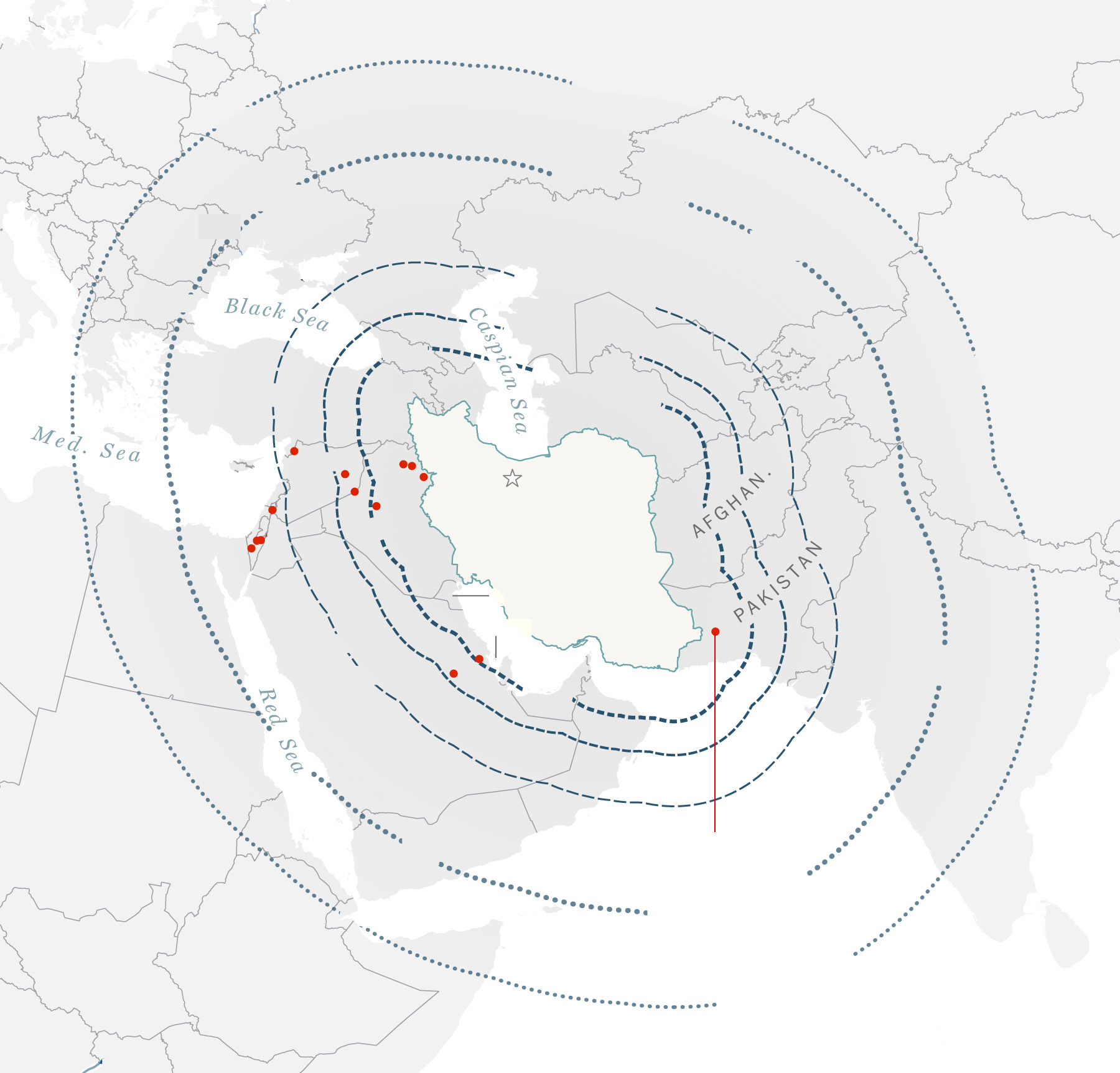
Iranian ballistic
missile ranges
1,240 miles
Locations of Iranian
missile strikes
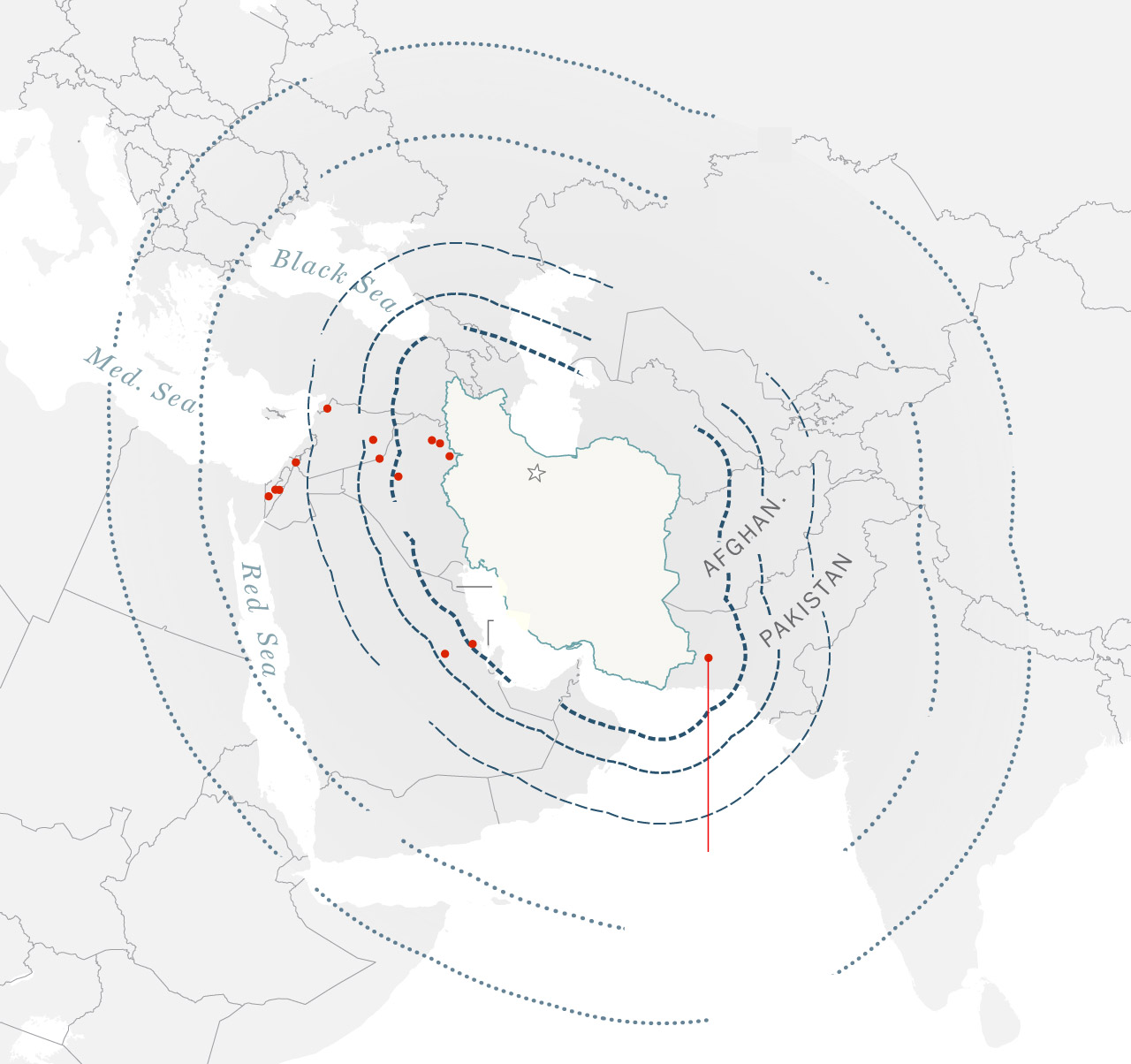
INDIAN OCEAN

But the attack on Israel suggests that many of Iran’s munitions are of low quality. Israel’s military said 99 percent of the missiles and drones launched by Iran were intercepted or failed to launch.
“We saw that accuracy and precision are a work in progress,” said Behnam Ben Taleblu, a senior fellow at the Foundation for Defense of Democracies who has written extensively about Iran’s missile program. “These weapons alone won’t win a war for Iran.”
Iranian drones made up the first wave of the attack. Cheap, effective and easy to produce, Iranian drones have been used in attacks across the Middle East for years. Iran has also supplied drones to Russia for its war in Ukraine , where they have been deadly.
During the attack on Israel, the slow-moving drones were probably deployed to occupy air defenses and allow more advanced munitions to get through. All the drones were shot down before entering Israeli airspace, the Israel Defense Forces said.
Ali Hamie, a Lebanese military analyst, said Iran had probably gleaned important lessons about Israel’s aerial defenses. Commentators on Iranian state television have made similar points.
“It could be a testing attack,” Hamie said, “and the Iranians got what they want. Making it past the air defenses is not only a symbolic victory, but real victory.”
One of the few missiles to make it through the interceptors hit an Israeli air base in the Negev desert. Images of the strike were run on loop on many state-run Iranian broadcasters in the days after the attack. Israel characterized the damage as minor.

General location of missile strikes
that reached the ground.
Beirut—
Populated areas
Haifa—
Tel Aviv—
—Amman
—Jerusalem
An emad missile
was found here.
The barrage of
missiles from Iran
included targeting
the Nevatim

General location of
missile strikes that
reached the ground.
Mediterranean

General location of missile
strikes that reached the
In addition to analyzing Israel’s air defenses, Tehran will probably also be studying the problems with its missile systems that reportedly led to failures at launch and in flight, according to Afshon Ostovar, a professor of national security affairs at the Naval Postgraduate School in California.
“Another attack could be more effective,” he said. But ultimately the kind of approach demonstrated in Saturday’s attack “is not really sustainable over a long-term conflict.”
Even if Iran changed the tempo of attacks and adjusted the munitions used, “they would still have to launch quite a lot of stuff for just a few [munitions] to get through,” he said.
Some Iranian officials have suggested they have held back their most dangerous weapons.
“We are prepared to use weapons we have never used before. We have plans for every scenario,” said Abolfazl Amoui, a parliamentary national security spokesman, in an interview with Lebanese broadcaster Mayadeen.
But analysts say it’s unlikely that any one type of munition could be a game changer. Rather, it’s more likely Iran would use the same kinds of munitions in a future attack, but in a different way: giving less warning, or launching the barrage in concert with allied militant groups in the region. The country’s proxy forces, from Lebanon to Iraq to Yemen, played little role in Saturday’s assault.
As Israel mulls its response , Tehran has warned that a counterattack would come in “a matter of seconds.”
“Iran will not wait for another 12 days to respond,” Deputy Foreign Minister Ali Bagheri Kani said Monday.
While the United States and Israel have celebrated the thwarting of Saturday’s attack, analysts are urging humility.
“The number of munitions it took to repel the attack was enormous, costly and could be difficult to replicate,” said Tom Karako, the director of the Missile Defense Project at the Center for Strategic and International Studies.
“Israel may have gotten lucky and Iran may have gotten very unlucky.”
William Neff and Suzan Haidamous contributed to this report.
Israel-Gaza war
The Israel-Gaza war has gone on for six months, and tensions have spilled into the surrounding region .
The war: On Oct. 7, Hamas militants launched an unprecedented cross-border attack on Israel that included the taking of civilian hostages at a music festival . (See photos and videos of how the deadly assault unfolded ). Israel declared war on Hamas in response, launching a ground invasion that fueled the biggest displacement in the region since Israel’s creation in 1948 .
Gaza crisis: In the Gaza Strip, Israel has waged one of this century’s most destructive wars , killing tens of thousands and plunging at least half of the population into “ famine-like conditions. ” For months, Israel has resisted pressure from Western allies to allow more humanitarian aid into the enclave .
U.S. involvement: Despite tensions between Israeli Prime Minister Benjamin Netanyahu and some U.S. politicians , including President Biden, the United States supports Israel with weapons , funds aid packages , and has vetoed or abstained from the United Nations’ cease-fire resolutions.
History: The roots of the Israeli-Palestinian conflict and mistrust are deep and complex, predating the establishment of the state of Israel in 1948 . Read more on the history of the Gaza Strip .
- After Israeli strike in Iran, both sides appear to downplay incident April 19, 2024 After Israeli strike in Iran, both sides appear to downplay incident April 19, 2024
- Homes burned, animals killed: Palestinians describe Israeli settler rampage April 16, 2024 Homes burned, animals killed: Palestinians describe Israeli settler rampage April 16, 2024
- Six months of the Israel-Gaza war: A timeline of key moments April 7, 2024 Six months of the Israel-Gaza war: A timeline of key moments April 7, 2024


IMAGES
VIDEO
COMMENTS
An air-launched cruise missile ( ALCM) is a cruise missile that is launched from a military aircraft. Current versions are typically standoff weapons which are used to attack predetermined land targets with conventional, nuclear or thermonuclear payloads. Specific types of ALCMs (current, past and under development) include:
The AGM-86 ALCM is an American subsonic air-launched cruise missile (ALCM) built by Boeing and operated by the United States Air Force.This missile was developed to increase the effectiveness and survivability of the Boeing B-52H Stratofortress strategic bomber.The missile dilutes an enemy's forces and complicates air defense of its territory.. The concept started as a long-range drone ...
The AGM-86B air-launched cruise missile, or ALCM, and AGM-86C/D conventional air-launched cruise missile, or CALCM, were developed to increase the effectiveness of B-52H bombers. In combination, they dilute an enemy's forces and complicate defense of its territory. Features. The small, winged AGM-86B/C/D missile is powered by a turbofan jet ...
AGM-158 JASSM. The AGM-158 JASSM ( Joint Air-to-Surface Standoff Missile) is a low detection standoff air-launched cruise missile developed by Lockheed Martin for the United States Armed Forces. [4] It is a large, stealthy long-range weapon with a 1,000-pound (450 kg) armor piercing warhead. It completed testing and entered service with the U.S ...
The AGM-86 Air-Launched Cruise Missile (ALCM) is a long-range, air-launched standoff missile designed to give U.S. bombers the ability to launch their payload from outside the range of anti-aircraft weapons. It is a central element of the United States strategic bomber force. ALCM Development The ALCM program began in the early 1970s, designed to give...
An unarmed AGM-86B air-launched cruise missile is released from a B-52H Stratofortress over the Utah Test and Training Range during a nuclear weapons system evaluation sortie on Sept. 22, 2014.
Features. The AGM-129A is a subsonic, turbofan-powered, air-launched cruise missile. It is harder to detect, and has greater range and accuracy than the AGM-86 air-launched cruise missile. The ACM achieves maximum range through its highly efficient engine, aerodynamics and fuel loading. B-52H bombers can carry up to six AGM-129A missiles on ...
The air-launched cruise missile had become operational four years earlier, in December 1982, with the 416th Bombardment Wing, Griffiss Air Force Base, N.Y., which deactivated when the base closed ...
The Spear 3 is an air-launched cruise missile that can target air defense units, ballistic missile launchers, fast moving and maneuvering vehicles, main battle tanks, naval vessels, and armored personnel carriers. 10 The mini cruise missile measures only 2 m in length and 0.180 m in diameter, but has an estimated range between 120-140 km. 11 ...
The air-launched cruise missile (ALCM) had a length of 6.3 m (20.7 feet); it attained a range of 2,500 km (1,500 miles). It was designed for deployment on the B-52 bomber. The Tomahawk sea-launched cruise missile (SLCM) and the Tomahawk ground-launched cruise missile (GLCM) had a length of 6.4 m (21 feet), a diameter of 53 cm (21 inches), and a ...
The Kh-101 / Kh-102 is a line of conventional and nuclear capable air-launched cruise missiles (ALCM) developed and deployed by Russia. It can fly at low altitudes to avoid radar systems and has a range of 2,500-2,800 km.
Hypersonic missiles could be next. A B-1B Lancer launches an intert AGM-158 Joint Air-to-Surface Standoff Missile, or JASSM, from an external pylon on its fuselage during tests Dec. 4, 2020 at ...
HACM, developed for the United States and Australia, is an air-launched hypersonic cruise missile designed to quickly strike targets on the ground. Under the terms of the contract, the Pentagon ...
The LRSO will replace the AGM-86B Air-Launched Cruise Missile as part of the airborne leg of the U.S.'s nuclear triad. It will first equip the B-52 but will also later arm the new B-21 Raider stealth bomber. The program's original plan was to build 1,020 missiles, plus 67 for testing, but current planned production figures were withheld.
An unarmed AGM-86B air-launched cruise missile is released from a B-52H Stratofortress Sept. 22, 2014, over the Utah Test and Training Range during a Nuclear Weapons System Evaluation Program sortie. Conducted by Airmen from the 2nd Bomb Wing out of Barksdale Air Force Base, La., the launch was part of an end-to-end operational evaluation of ...
An MC-130J Commando II from the 352nd Special Operations Wing launched a Joint Air-to-Surface Standoff Missile-Extended Range cruise missile using the system nicknamed "bomb bay in a box" in a ...
The United States Air Force (USAF) deploys an air-launched cruise missile, the AGM-86 ALCM. The Boeing B-52 Stratofortress is the exclusive delivery vehicle for the AGM-86 and AGM-129 ACM. Both missile types are configurable for either conventional or nuclear warheads.
Unarmed AGM-86B Air-Launched Cruise Missile, or ALCM, is released from a B-52H Stratofortress over the Utah Test and Training Range during a previous Nuclear Weapons System Evaluation Program sortie on Sept. 22, 2014. Recent sorties underscored the cruise-missile capability of the B-52H and the ALCM's sustainability. (U.S. Air Force file ...
Cruise missiles have gained a vital role in today's conflicts due to their precision, speed and versatility. They have the ability to be launched from air, land, sea and subsea, which makes them vital assets for deterrence and open combat. Cruise missiles travel at high subsonic speeds, and targets are found via GPS, INS, optical correlation ...
Given that the latest versions of the Navy's Boeing BA-made air-launched (and ship-launched) AGM-84 Block II Harpoon anti-ship cruise missiles cost approximately $3 million per copy, the service ...
The LRSO will replace the 40-year-old AGM-86B Air-Launched Cruise Missile and eventually be the primary nuclear weapon for the upgraded B-52J Stratofortress and the new B-21 Raider. Comparing Air Force budget documents for fiscal 2024 and 2025, LRSO's procurement funds were cut $64.7 million for '25 but increased more than $200 million in ...
They can be launched from the ground, air or sea. The missiles can fly very low and are difficult to detect. Cruise missiles are self-guiding but can be controlled by remote operators with cameras.
Plans are at an early stage, according to a newspaper report, although there is no decision on whether the missile will be launched from land, sea or air. Sunday 28 April 2024 05:29, UK Image: The ...
The Kh-55 (NATO: AS-15 "Kent) is an air-launched cruise missile developed by the Soviet Union starting in 1971. Originally designed as a strategic system capable of delivering a nuclear warhead 2,500 km, the missile has given rise to several variants. These include the Kh-55SM, an extended range version; the Kh-555, a conventional version; and the...
Israel used all four tiers of its air defences — and help from allies — to block Iran's mass drone and missile attack on Israeli territory on April 13, officials say. The Israeli and U.S ...
Ukraine's air defenders say they notched up two significant firsts on Friday morning, taking down a Russian Tu22M3 strategic bomber and hitting two Kh-22 hypersonic cruise missiles in flight.
The Storm Shadow is a Franco-British low-observable, long-range air-launched cruise missile developed since 1994 by Matra and British Aerospace, and now manufactured by MBDA. " Storm Shadow" is the weapon's British name; in France it is called SCALP-EG (which stands for "Système de Croisière Autonome à Longue Portée - Emploi Général"; English: "Long Range Autonomous Cruise Missile ...
An S-300 air defense system displayed in Tehran in 2017. ... Iran responded last week by firing a barrage of drones and cruise and ballistic missiles at Israel, almost all of which were shot down ...
Russia launched a total of 34 missiles at Ukraine by air, ground, and sea, ... The barrage included Iskander ballistic missiles, Kh-59 cruise missiles, and ship-launched Kalibr missiles, among ...
With more than 300 drones and missiles launched in a layered onslaught, it was Iran's largest-ever conventional show of force.That it inflicted only minimal damage was due in part to the ...